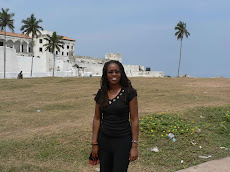
 I can’t believe I just spent close to five straight hours on the internet.
I can’t believe I just spent close to five straight hours on the internet.I’m at a “best kept secret” hotel in Windhoek catching up on blogging, chatting, Facebook, and the feeling of being virtually connected. I call it a best-kept secret because the location is great (I’m across the street from the “new” mall that has virtually everything, including a movie theater (maybe the only one in town); the neighborhood is safe and diverse; the rooms have TVs and en suite showers with running hot water; the rooms are air-conditioned; I CAN ACCESS THE INTERNET USING MY WIRELESS NETWORK CARD; and I’m only paying N$300 for the night. I’m set. I return to Khorixas tomorrow; so, I’ve been taking full advantage of these resources (which I may not see again for a while), especially the internet.
Most people in the country connect via phone (mobile phone, home phone, or public phone) or internet. The majority, however, are not under contract; there are a number of “pay as you go” plans. These systems allow people to buy calling credits or airtime and just recharge as needed. You can buy a recharge card just about anywhere – at the post office, grocery store, bottle store (liquor store), clothing stores, china shops, street corners, gas stations, and the list goes on. There are about three main phone service providers that sell cards and have packages.
The other option is to go to an internet café, which can range anywhere in cost from N$8.00/30min to N$20/30min. Thing is, internet cafes have certain working hours; I’ve already gotten a virus on my flash drive; and not all of the services are reliable.
When I was in the town of Tsumeb last month, I bought three 20-minute “Wi-Space” internet access cards, at N$10 each. I am only now finding myself in a “Wi-Space” zone again so I can use them. I flew through the 60-minutes of credit Skyping with mom and dad and needed to plunge deeper. I ended up buying a 250-minute Wi-Space card for N$100. I just finished that credit and went downstairs to buy another 250-minute card.
Each card has a login code so I can easily logoff and just use the card when needed.
So today, I spent N$230 on the internet, which is roughly US$26.00. I fully believe it was worth the feeling I got connecting with loved ones and sharing the latest happenings around the world.
(Mom, forgive me for posting the pic of us Skyping, but it was a good illustration to support this topic)
















.jpg)